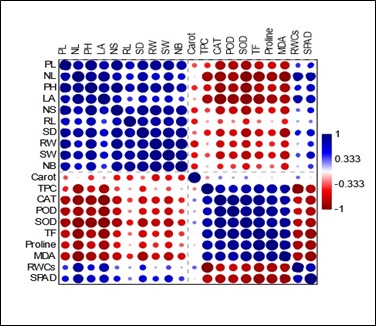
Melatonin is essential for promoting plant growth and development even under stress conditions. This study examined the morphological and biochemical changes of Solanum muricatum under drought stress and studied the effects of foliar-applied melatonin in mitigating drought-induced stress. A completely randomized design with three replications was done using two levels of drought stress (50% and 75% FC) and four levels of melatonin application (0, 50, 100, and 150 µM). Drought stress had a negative effect on several growth attributes, which include plant growth, pedicle length, area of leaves, height of plants, and root length. Morphological traits such as pedicle length, leaf area, and root length improved particularly at 100 µM MT by 59.6%, 58.2%, and 41.3%, respectively. Melatonin reduced oxidative stress markers, with MDA levels decreasing by 61.5% and 55.8% under 50% and 75% FC, respectively. Antioxidant enzyme activities were enhanced; SOD was increased by by 28.2% under 50% FC at 100 µM, while CAT and POD activities were reduced to 44.7% and 58.9%, respectively, under 50% FC at 100 µM. Proline content was increased by 20.5% under 50% FC at 50 µM. The correlation analysis, along with the heatmap visualization, showed strong relationships between the melatonin application and growth, physiological traits, and biochemical responses. The study found that moderate melatonin concentrations (50–100 µM) significantly improved drought resilience. While a 150 µM concentration of melatonin showed lower improvements. These findings underscore melatonin's potential as a sustainable strategy to enhance crop productivity under water-limited conditions. Future studies should focus on long-term field studies and the molecular mechanisms of melatonin stress mitigation effects.
Total file downloads: 22